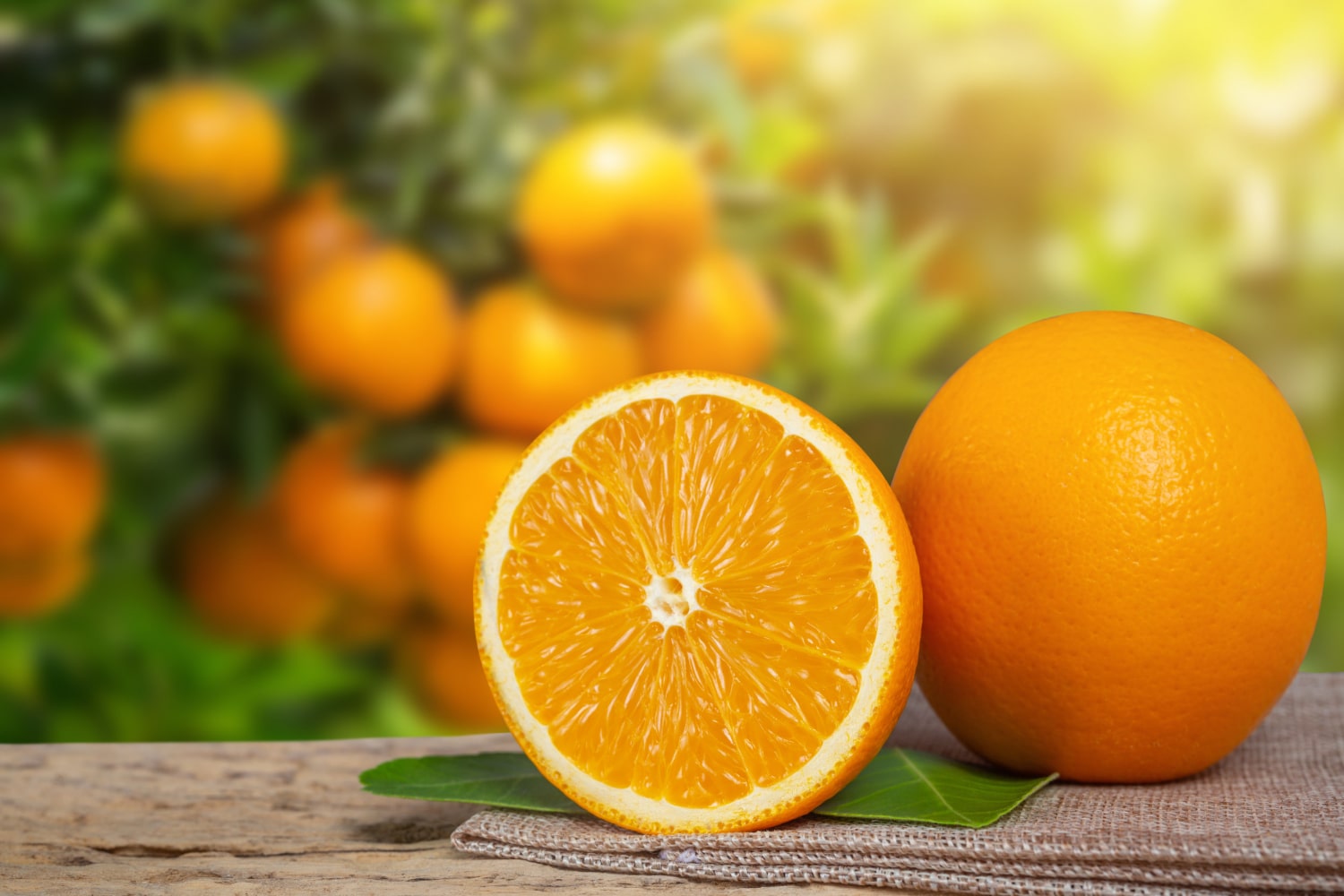Oranges are among the most popular fruits in the world, well-known from childhood for their sweet, juicy taste and refreshing aroma. But beyond their delicious flavor, oranges hold a fascinating history, impressive health benefits, and important roles in global culture, trade, and even space missions. This citrus fruit is grown in more than a hundred countries and used in medicine, gastronomy, cosmetics, and aromatherapy. Below is a collection of interesting and educational facts about oranges that you might not have known before.
- Oranges are not a naturally occurring fruit. They are a hybrid of pomelo and mandarin, first cultivated over 4,000 years ago in Southeast Asia, likely in China or India. Interestingly, the Chinese word for “orange” sounds very similar to the word for “happiness”.
- The English word “orange” has roots in the Old French word “pomme d’orenge” and the earlier Arabic “nāranj”, which came from Sanskrit. In Dutch, the word “sinaasappel” means “Chinese apple”, reflecting the fruit’s origin. In some Slavic languages, including Polish, the fruit is called “pomarańcza”.
- The top orange-producing countries in the world are Brazil, India, China, and the United States. Brazil alone grows more than a third of all oranges globally, most of which are processed into juice. Orange juice remains one of the most widely consumed fruit beverages worldwide.
- Oranges contain over 170 phytochemicals and more than 60 flavonoids, which provide strong antioxidant, anti-inflammatory, and anticancer properties. In addition to vitamin C, oranges are rich in vitamins A, B1, and B9, as well as potassium, magnesium, and dietary fiber. This makes oranges not only tasty but also incredibly healthy.
- Orange juice is the only fruit juice officially included in the NASA astronauts’ breakfast menu. It is valued for its high vitamin C content and long shelf life when packaged properly. In space, it is often consumed in gel form for practicality.
- Orange trees are evergreen and can live up to 100 years, producing fruit even at an advanced age. Their peak fruit production typically occurs between 10 and 15 years after planting. A single tree can yield between 200 and 300 fruits annually.
- A medium-sized orange contains about 90 to 100 milliliters of juice. Producing one liter of orange juice requires about 2 to 2.5 kilograms of fresh oranges. Freshly squeezed juice retains its nutritional value for only a few hours.
- In ancient Rome, oranges were considered rare and valuable delicacies. They were imported from Asia in small quantities and available only to the wealthy elite. In the Middle Ages, oranges were sold in pharmacies as a remedy for scurvy.
- Orange peel contains more essential oils than the fruit’s flesh. It is often used in perfumes, culinary recipes, and aromatherapy. Orange essential oil has calming effects and helps reduce stress and anxiety.
- The harvesting season for oranges depends on the variety but usually lasts from November to May. There are both summer and winter varieties, which differ in taste and skin thickness. In tropical regions, orange trees can bear fruit multiple times a year.
- Oranges are categorized into two main types: sweet (Citrus sinensis) and bitter (Citrus aurantium). Sweet varieties are eaten fresh or used for juice, while bitter ones are used in marmalade, liqueurs, and essential oil production. Popular varieties include Valencia, Navel, and blood oranges.
- Oranges are widely used in cooking, not just in desserts. They pair well with poultry, duck, seafood, and can be found in salads, sauces, and even soups. Orange zest is a secret ingredient in many baked goods due to its aromatic quality.
- In Chinese culture, oranges symbolize luck and prosperity, especially during Lunar New Year celebrations. They are exchanged as gifts to wish happiness and wealth. Oranges are also used to decorate homes along with red envelopes.
- Globally, more than 70 million tons of oranges are consumed annually. This makes them the second most popular fruit in the world, right after bananas. Oranges are grown in over 100 countries across different continents.
- Orange trees are sensitive to cold weather, and even light frost can damage the fruit. That’s why most commercial orange groves are located in subtropical climates with mild winters. Plenty of sunlight is essential to develop the fruit’s sweetness.
- Oranges help purify the air by releasing phytoncides, which are natural compounds that inhibit the growth of bacteria and other microorganisms. For this reason, dried orange peel is often used in homemade sachets and natural air fresheners.
Oranges are more than just a delicious fruit — they are a symbol of health, history, and global culture. These interesting facts shed light on the complexity and versatility of a fruit we often take for granted. You might not have known that oranges play such an important role in nutrition, science, and tradition. Learning about oranges in detail allows us to appreciate their value in a whole new way.





